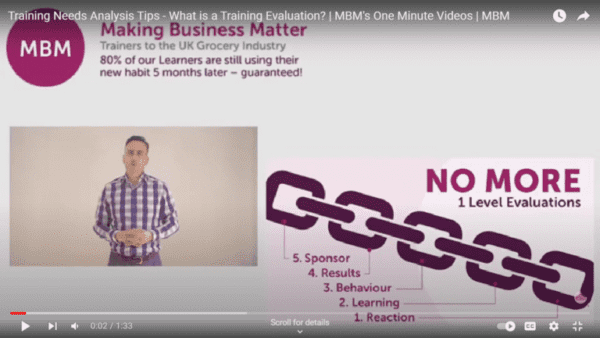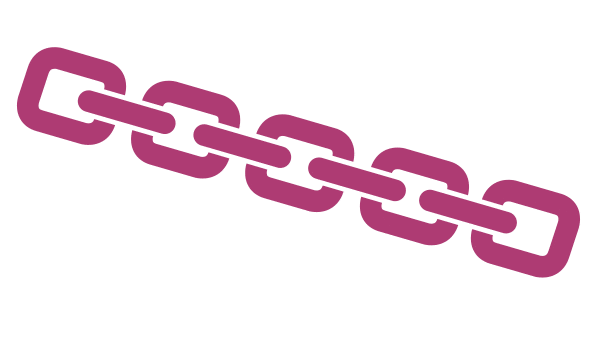50% of Training is not Evaluated Beyond Level 1 (Source: CIPD Annual Survey)
Most companies rarely evaluate training. In fact, according to the Learning Resources Network, the results are startling.
- Level 1 – Reaction is used 77%.
- Level 2 – Learning is used 36%.
- Level 3 – Behaviour is used 15%.
- Level 4 – Results are used only 8% of the time.
For our Clients, their Learners and our continued success, measuring your ROI from training is a key part of the service that we provide. There are 3 sections of this article that explain how we evaluate training:
- Which Model Do We Use & Why?
- What Does This Mean for Our Clients?
-
How is this Kirkpatrick Model Used to Evaluate Training in Practice?
Click below to watch the video to learn more.

1. Which Model Do We Use & Why?
Of the many models that are available to measure return on investment from training, only one has stood the test of time – ‘The Kirkpatrick Four-level Evaluation Model’. Developed by Don Kirkpatrick. He wrote his first thoughts on training evaluation back in the 1950s and wrote his first book explaining the model in 1993. The Kirkpatrick model evaluates training on 4 levels:
Level 1 – Reaction – Feel:
How did the Learners react to the training? (Few training providers measure the return on investment beyond this level. Most do a ‘Happy sheet’, asking what the Learners think at the end of the day, and that’s all they do to evaluate their ROI).
Level 2 – Learning – Know:
How much learning did the Learners get?
Level 3 – Behaviour – Do:
How much have the Learners used the learning?
Level 4 – Results – Numbers:
How much effect did the learner’s learning have on performance?
We have added one further level…
Level 5 – Sponsor – Belief:
What ‘observable change in performance’ has been achieved?
This further level has been added to evaluate the overall business objectives as set out at the start of any training programme and then once it has been completed.

2. What Does this Mean for Our Clients?
For our Clients this means:
| Financial: | Confidence that you will be able to understand the return on your money spent. |
| Risk: | Less risk knowing that the money you are spending will be comprehensively evaluated. |
| Strategy: | Comfortable that you will understand whether to continue training and how to improve. |
| People: | A good understanding of whether this training is working for your people. |

Complete the form below and see an example of how we evaluate training… It’s free.

How is the Kirkpatrick Model Used to Evaluate Training in Practice?
This is how we evaluate a training course for you:
From the Learner’s Perspective
| Reaction – Level 1: | On each of the Foundation and the Advanced training courses, the Learner is asked for their feedback. This is commonly known as a ‘happy sheet’. |
| Learning – Level 2: | At the Foundation training course, the learner is sent an evaluation, asking them to say whether the training course achieved the learning objectives, how likely they are to achieve their individual learning objective, 3 useful tools that they took away, and how much their knowledge has increased. |
| Behaviour – Level 3: | At the Intermediate training course, the Learner is sent an evaluation, asking them to say how much of their individual learning objective they have achieved and to name 3 behaviours they are now doing differently. |
| Results – Level 4: | At the Advanced training course, the learner is asked, on the day, to identify one example of a change in their behaviour that has led to a bottom-line impact. |
Please note our money-back guarantee. You can see an example of a completed Chain of Evidence for a client (Names removed for GDPR).

Find out how you can achieve behavioural change and have 5-level training evaluation reports – Click on the button below:


